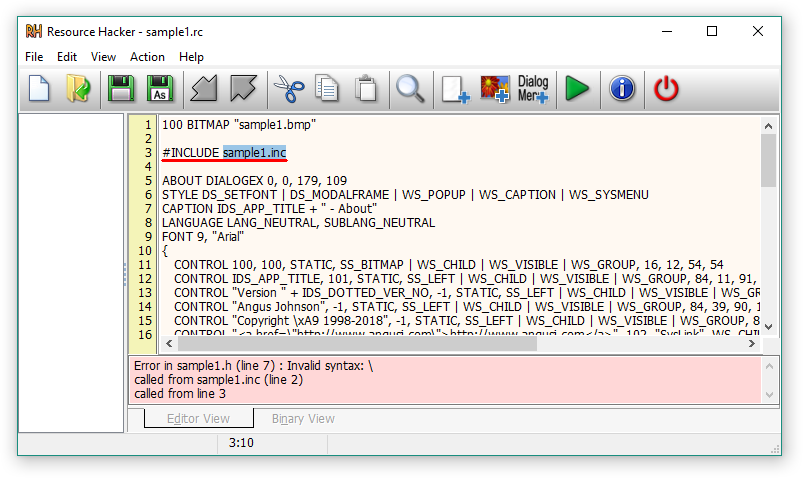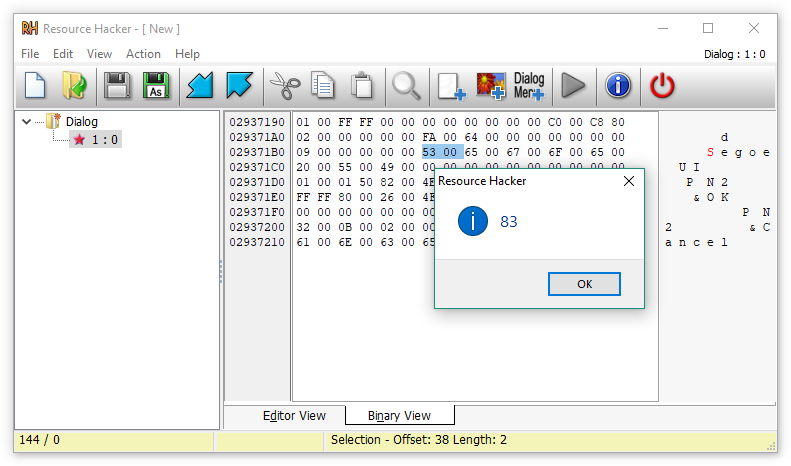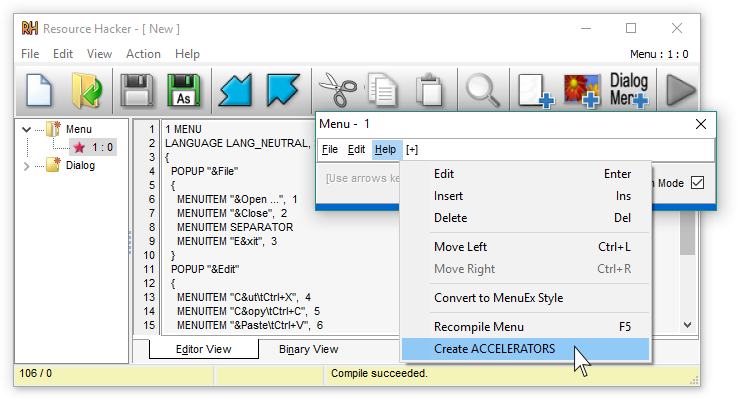

The go command locates the repository containing a given module path by requesting a corresponding HTTPS URL and reading metadata embedded in the HTML response (see Initialized empty Git repository in /home/user/hello/.git/ Optional: you do not need to use source control to write Go code. If you're using a source control system, now would be a good time to initializeĪ repository, add the files, and commit your first change. $ export PATH=$PATH:$(dirname $(go list -f ''.

#HOW TO READ EXE CODE INSTALL#
For added convenience, we'llĪdd the install directory to our PATH to make running binaries Next, let's run the program to ensure it works. So in our working directory, the following commands are all equivalent: To the working directory, and default to the package in theĬurrent working directory if no other path is given. The example/user/hello module, go install may fail.įor convenience, go commands accept paths relative To unset a variable previously set by go env -w, use go env -u:Ĭommands like go install apply within the context of the moduleĬontaining the current working directory. You can use the go env command to portably set the default valueįor an environment variable for future go commands: The bin subdirectory of the default GOPATH The bin subdirectory of the first directory in If GOPATH is set, binaries are installed to If GOBIN is set, binaries are installed to thatĭirectory. The install directory is controlled by the GOPATH Under Windows, %USERPROFILE%\go\bin\hello.exe). It then installs that binary as $HOME/go/bin/hello (or, This command builds the hello command, producing an executableīinary. Now you can build and install that program with the go tool: Next, create a file named hello.go inside that directory containing The first statement in a Go source file must be Go: creating new go.mod: module example/user/hello $ mkdir hello # Alternatively, clone it if it already exists in version control. To compile and run a simple program, first choose a module path (we'll useĮxample/user/hello) and create a go.mod file that Import path is its module path joined with its subdirectory within the module.įor example, the module /google/go-cmp contains a package The go command would consult the repository indicated byĪn import path is a string used to import a package.
#HOW TO READ EXE CODE CODE#
However, it's a good habit to organize your code as if you will publish itĮach module's path not only serves as an import path prefix for its packages,īut also indicates where the go command should look to download it.įor example, in order to download the module /x/tools, A module can be defined locally without belonging to a repository.

Note that you don't need to publish your code to a remote repository before youĬan build it. Of that directory, up to the next subdirectory containing another The directory containing its go.mod file as well as subdirectories

Prefix for all packages within the module. Go.mod there declares the module path: the import path A Go repository typicallyĬontains only one module, located at the root of the repository. Of related Go packages that are released together. Other source files within the same package.Ī repository contains one or more modules. Types, variables, and constants defined in one source file are visible to all Of source files in the same directory that are compiled together. The older, pre-modules version of this document, it is archived GO111MODULE environment variable is not set. Note: This document assumes that you are using Go 1.13 or later and the Module and introduces the go tool, the standard way toįetch, build, and install Go modules, packages, and commands. This document demonstrates the development of a simple Go package inside a


 0 kommentar(er)
0 kommentar(er)
